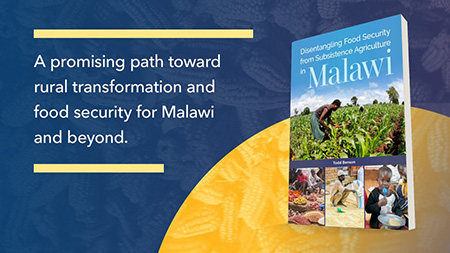Abstract: This study explores Malawi’s vulnerability to economic and climatic shocks and identifies those contributing most to economic uncertainty. The Malawian Computable General Equilibrium (CGE) model was employed to simulate a range of potential economic outcomes under various sampled shock scenarios developed using historical data to capture domestic agricultural yield volatilities and world market prices uncertainty for traded goods. Data mining and machine learning methods were applied to quantify the contribution of each shock to the uncertainty of economic outcomes (gross domestic product [GDP], private consumption, poverty, and undernourishment). Key findings suggest that domestic cereals and oilseeds yield volatility risks are the most important for the uncertainty of total GDP and consumption across all household types except rural low-income households. Rural low-income households’ consumption and poverty are exposed to a wide range of risks, including productivity volatility of livestock, yield volatility of oilseeds, cereals, and vegetables and world market price of beverage crops. Finally, for undernourishment outcomes, volatility in the yields of staple cereals is the dominant risk factor for all household types. Understanding how possible shocks would impact various segments of the Malawian economy and population is a critical first step in facilitating discussions on relevant risk mitigation strategies, such as increasing average crop yields, adopting technologies and practices that narrow yield uncertainties, or diversifying production away from risky crops and sectors.
Authors: Askar Mukashov, Jan Duchoslav, Henry Kankwamba, Eleanor Jones, and James Thurlow.
Read and download the country brief here (PDF 863.09 KB).
